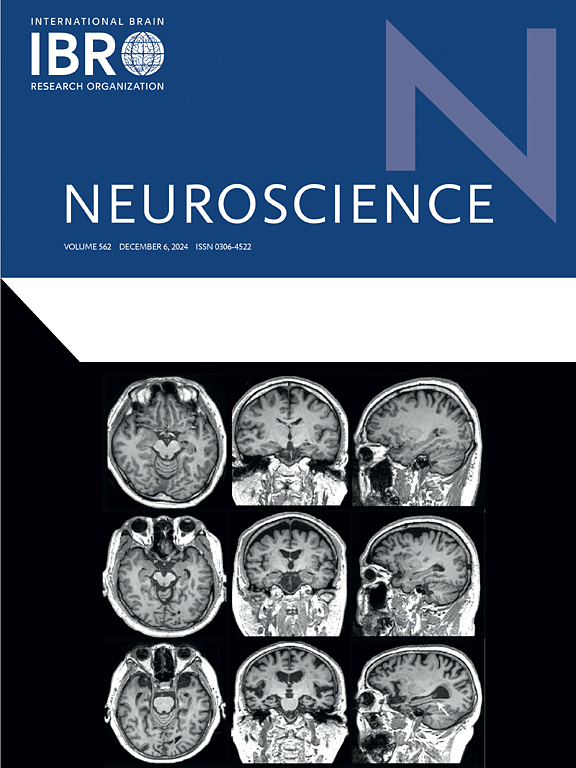用于空间认知分析的任务状态脑电图特征提取:功率谱密度和排列条件互信息方法。
IF 2.8
3区 医学
Q2 NEUROSCIENCES
引用次数: 0
摘要
将时域和空域信息相结合的排列条件互信息(PCMI)方法可以有效地分析神经元组的脑电信号。针对PCMI算法中频域信息缺失的问题,提出了一种基于功率谱密度排列条件互信息(PSDPCMI)的脑电信号特征提取方法。本研究以虚拟社区训练游戏和虚拟城市行走测试游戏为载体,利用PSDPCMI算法的性能进行VR空间认知训练实验,对被试进行训练和评估。将PSD、PCMI和PSDPLV三种特征提取方法与提出的PSDPCMI算法进行比较。结果表明,所有频段的分类准确率最高,其中Theta、Beta2和Gamma频段的分类准确率最高。此外,新算法在大多数频带上的准确率、查全率、F1-score和AUC-score均高于PSD、PCMI和PSDPLV算法,在不同分类模型和另一种空间认知数据集上的分类精度也较好。实验结果表明,所提出的PSDPCMI方法在脑电信号特征提取方面具有显著的性能。本文章由计算机程序翻译,如有差异,请以英文原文为准。

Task-state EEG feature extraction for spatial cognition analysis: a power spectral density and permutation conditional mutual information approach
The permutation conditional mutual information (PCMI) method which combined time and spatial domain information was found effective in analyzing EEG signals of neuron groups. Considering the absence of frequency domain information in the PCMI algorithm, a feature extraction method based on Power Spectral Density Permutation Conditional Mutual Information (PSDPCMI) was first proposed to analyze task-state EEG signals. In this study, the performance of the PSDPCMI algorithm was employed for a VR spatial cognitive training experiment based on a Virtual Community training game and a Virtual City Walking testing game as carriers for subjects’ training and evaluation. The PSD, PCMI, and PSDPLV feature extraction methods were compared with the proposed PSDPCMI algorithm. According to the results, the highest classification accuracy was achieved across all frequency bands, with notable performance in the Theta, Beta2, and Gamma frequency bands. Besides, the new algorithm proposed also had higher precision, recall, F1-score, and AUC-score than the PSD, PCMI, and PSDPLV algorithms in most frequency bands and performed well in the classification accuracy of different classification models and another spatial cognitive dataset. The experimental outcomes demonstrated that the proposed PSDPCMI method in feature extraction showed a significant performance for the EEG signal analysis.
求助全文
通过发布文献求助,成功后即可免费获取论文全文。
去求助
来源期刊

Neuroscience
医学-神经科学
CiteScore
6.20
自引率
0.00%
发文量
394
审稿时长
52 days
期刊介绍:
Neuroscience publishes papers describing the results of original research on any aspect of the scientific study of the nervous system. Any paper, however short, will be considered for publication provided that it reports significant, new and carefully confirmed findings with full experimental details.
 求助内容:
求助内容: 应助结果提醒方式:
应助结果提醒方式:


